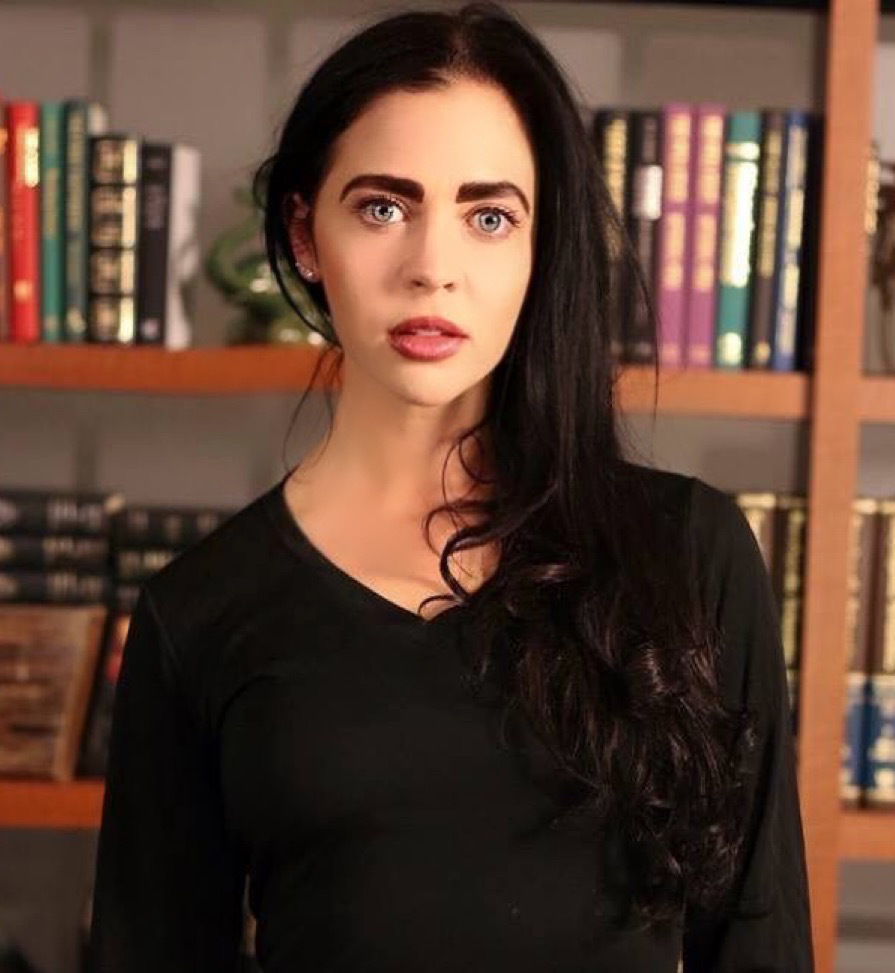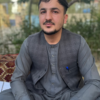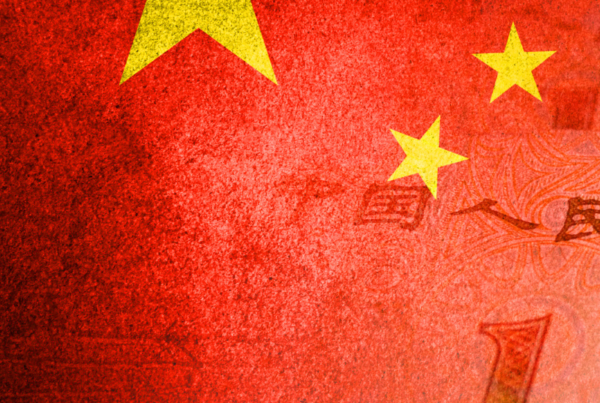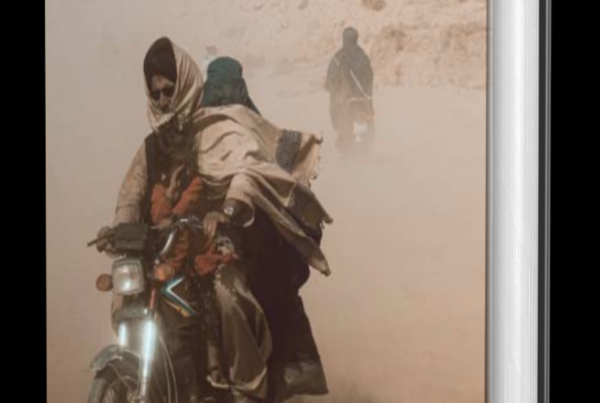KFAR AZA, Israel – It is whimsically quiet in a small agricultural neighborhood tucked into western Israel, but the tension is inescapable. The sensibility that something could erupt at any moment is not lost on the close-knit families that live just a mile from the Gaza border.
“We see children playing here; we see this beautiful place,” Chen Kotler Abrahams, a member of “Kibbutz Kfar Aza,” says softly. “So, it is a rather skewed perspective just how quickly it can become a battlefield.”
The sleepy village is something of a buffer zone between Israel and Gaza, called Kfar Aza, which in Hebrew means Gaza Village. For over two decades, tensions have flared between Israelis and Palestinians wedged into the overcrowded city. The ascending hope for peace perished a little more in 2006, when Hamas, a designated terrorist organization in the United States, became the de facto governing authority of the embattled Gaza Strip.
However, Kibbutz Kfar Aza residents were further imperiled this summer – as did civilians on the other side who bear the retaliatory brunt – when rockets cracked into their open fields again – this time from the Iran-backed Islamic Jihad.
“Two months ago, there was a war here. You couldn’t walk safely outside your house,” Chen tells me in the early Spring. “There was rocket fire and explosions above your head, and the roads were closed. Then when it is all over, you have to go straight back into everyday mode. You have to send your kids to school, resume your business – it is tough, it is not easy to do.”
Chen likens it to “folding your military uniform and putting back on your everyday suit.”
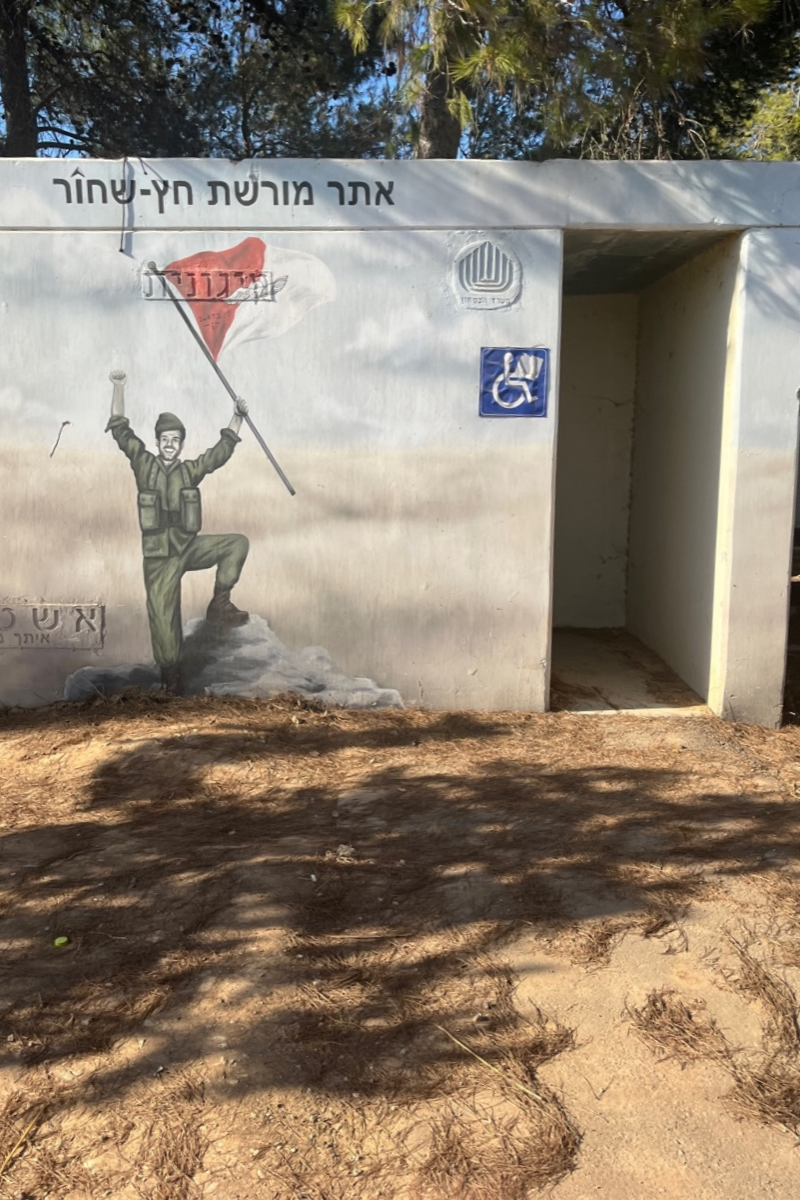
The notion of Code Red alerts ominously indicating possible rocket fire from Gaza, followed by the mad dash into a bomb shelter – for many, that is a child’s playground of which you have less than 15 seconds to get there – is the searing reality for the community.
With a population of around 750, Kfar Aza is peppered with dozens of bomb shelters, wedged everywhere from sports fields to schools to sidewalks. In addition, every home now comes with an attached solid concrete room, constructed by the Israeli government several years ago.
As Chen guides me through the sleepy patch of land, she pulls out remnants of rockets, bombs, and balloons that have become so deeply ingrained in her psyche, including Israel’s infamous Iron Dome missile and rocket interceptor, which has a 90-something percent success rate, and is a prevailing reason why more Israelis don’t die in these flare-ups.
But then there is the frustrating acceptance that tokens of joy can quickly become death traps.
For one, children are cautioned to stay away from any stray balloons. After all, the otherwise vibrant symbol of celebration is a potential killer in this little parcel of the world. As Chen explains, balloons can randomly fly over with the homemade appendage of explosive devices. War is never far away; war is a way of life: conflict climbs and atrophies, and anger on both sides surges.
Here, Chen raised her only son, Orr – now 23 and living his own life in Tel Aviv – and this Kibbutz is still where most of her family lives. Still, I can’t help but wonder why Chen and others continue to live their lives under such a constant bruised-colored cloud of danger.
While still driven by the tenants of community and connection, life in an Israeli Kibbutz has come a long way from its communal, socialist, hippie-esque roots. While the very first Kibbutz came to life in 1909, the movement ignited in the late 1950s, spurred on by Zionist pride and socialist principles of an entirely collaborative culture. Based on Chen’s depiction, it was like San Francisco in its commune days, meeting a closed Amish community – but the rules on how to live were extremely strict.
In 1973, at just four years old, and amid the Yom Kippur War, Chen’s parents followed her grandparents to Kfar Aza, founded by her aunt and uncle.
“My father was in this life-or-death situation in the Golan Heights, so my mother took my sister and me from Tel Aviv. Later, he was released from the military and joined us,” she recalls.
Nevertheless, the shared living style meant her own loving parents did not actually raise Chen.
“The community raised the children; it was about creating a just society. All resources had to be shared equally by all members,” she explains. “No one had bank accounts; there were no private properties. Everyone in the Kibbutz was evaluated by their work and contribution to the society.”
But a little more frankly, Chen points out that she was essentially “taken from (her) mother.” Her mother subsequently had to smuggle notes into the kindergarten she slept in because direct communication was only allowed for a few hours in the morning and night.
“Imagine you are a small child, you are sick in the kindergarten, and your parents are not there in the middle of the night,” she notes sadly. “You have to go to the intercom and push a button and ask a night guard to take care of you.”
In the late 70s, when Chen reached sixth grade, she was allowed to return to her parents after child separation became a cause of concern nationwide. Only there was one big problem – most houses did not have the space for children to return, thus requiring quick reconstruction. By the end of seventh grade, the Kibbutz system dictated that Chen was old enough to live independently, like a student in a college dorm.
Then as a young adult, Chen left the Kibbutz to complete her mandatory military service, and then to get married and pursue a career in the media. She recounts that working outside the tight community was not accepted at that time. However, after some years, the staunch traditions of the Kibbutz started to shift and venture into a privatization process, prompting Chen to return after a decade away to raise her son close to her immediate family.
“Things became much more diverse, much more open. People can have a career here now and own property. It is very different,” Chen affirms.
The “renewed” Kibbutz still carries the values of a cooperative, yet education is strongly embraced. And even though the old style induced plenty of negative ramifications, some good was to come from it.
“It has given me sensitivity to people’s needs and voluntarism. I have always volunteered throughout my life. It is part of my life.”
While life in the early Kibbutz era brought about its own challenges, the concept of bombs and bullets flying was not necessarily one of them. Even though Kfar Aza, in its dawn years, was considered a frontier against an onslaught from the then Egypt-governed Gaza, Chen reminds me that the conflict evolved much later. In the ominous year 2001, the soundtrack of a mortar or missile gained momentum. The intifada of the early 2000s, followed by Hamas’s clamor to power, ultimately converted the self-sustaining pocket into a perpetually red zone.
Nevertheless, decades of fire and uncertainty, and the perpetual weight of helplessness, have taken its toll.
“There is no PTSD here; there is no post-trauma because there is no time for the body and mind to heal,” Chen asserts, her voice cracking a little. “Everyone here is suffering some trauma, whether we are talking about it outright or even if we know we have it. But trauma is a sneaky thing.”
Yet despite the obvious downside to this unsteady life, scores of Israeli families still choose to remain – and even move to – one of the country’s 265 agrarian Kibbutz cooperatives. Although just under 20 percent of them are deemed inside or skirting a potential battlefield, I figure there is something more to it – beyond tax incentives and affordable housing. Perhaps it is a relic of a time gone by, a throwback to what once was, a modern twist on what it means to know your neighbors.
Or it is the fervent belief that somehow the situation will soon change.
“I can live under this extreme security situation because I am hopeful; I believe it is a changeable situation,” Chen adds after a long pause. “On the other side of the fence, there are people who want this change the way I want it. We all deserve a good life. I believe our region can change, and it will.”
